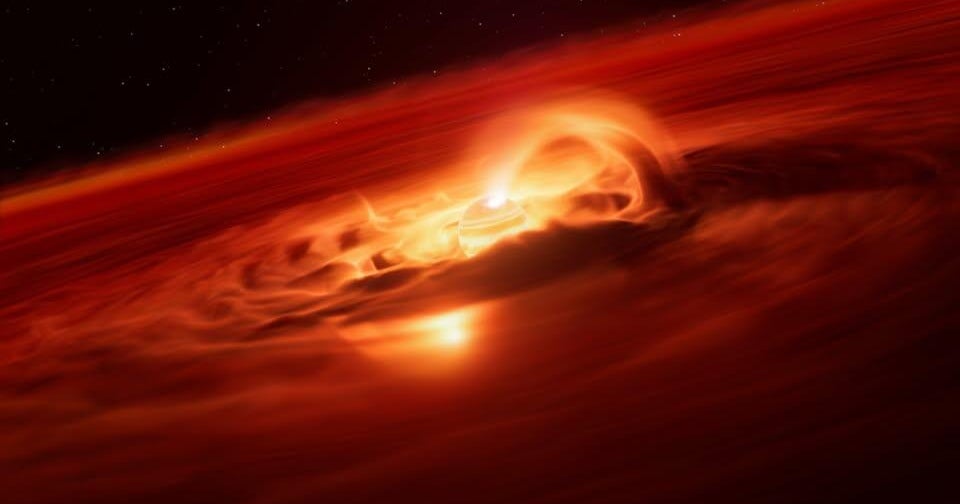Unbelievable Discovery: Rogue Planet Devours 6 Billion Tons of Matter Every Second!











2025-10-02T17:14:22Z

In an astonishing revelation that challenges our understanding of celestial bodies, a rogue planet has been observed consuming an incredible 6 billion tons of gas and dust every second. This finding, shared by astronomers on Thursday, not only highlights the strange behaviors of these elusive planetary-mass objects but also blurs the lines between planets and stars.
Unlike familiar planets that orbit a star, rogue planets float freely through the cosmos, unanchored and drifting in eternal darkness. Scientists estimate that there could be trillions of these mysterious entities in our galaxy, yet they remain notoriously hard to detect due to their solitary and silent nature.
“People may think of planets as quiet and stable worlds, but with this discovery, we see that planetary-mass objects freely floating in space can be exciting places,” said Víctor Almendros-Abad, the lead author of the groundbreaking study.
These rogue planets present a fascinating dilemma for astronomers: they’re neither traditional stars nor fully-fledged planets. “Their origin remains an open question,” remarked Alexander Scholz from the University of St. Andrews, emphasizing the mystery surrounding whether these objects formed like stars or if they are simply giant planets ejected from their original systems.
The rogue planet in question, officially named Cha 1107-7626, is located around 620 light-years away in the constellation of Chamaeleon. This celestial giant boasts a mass five to ten times greater than Jupiter and is still in its infancy, only about 1 to 2 million years old.
What makes this observation so remarkable is the planet's sudden growth spurt; researchers detected it dramatically increasing its intake of surrounding matter—an extraordinary accretion process—at a rate previously unseen. In August, the planet began this binge-eating phase at a record pace, eight times faster than just months prior, marking the strongest accretion episode ever recorded for a planetary-mass object.
As the astronomers studied the light emitted before and during this rapid growth, they noted a significant magnetic activity driving matter toward Cha 1107-7626—a phenomenon previously linked only to stars. Furthermore, the chemistry of the surrounding disc shifted, revealing the presence of water vapor during the accretion episode, another indicator of behavior typically associated with stellar formations.
Ray Jayawardhana from Johns Hopkins University highlighted that this discovery suggests some massive objects may form similarly to stars, evolving from contracting clouds of gas and dust with their own accretion discs, and experiencing intense growth phases akin to those of newborn stars.
Despite its unusual characteristics, Cha 1107-7626 is still expected to resemble massive planets, as it falls within their size range. However, Scholz clarified that unlike stars, this rogue planet won’t possess the mass needed for fusion reactions at its core and will inevitably cool as it ages.
Amelia Bayo, another co-author of the study, expressed the awe inspired by this discovery, stating it encourages us to reflect on the nature of worlds beyond our own during their formative periods. The observations were made using the European Southern Observatory's Very Large Telescope in Chile, alongside data from the James Webb Space Telescope, which recently showcased vibrant images of stars and cosmic dust in the Milky Way's most active star-forming regions.
 James Whitmore
James Whitmore
Source of the news: CBS News